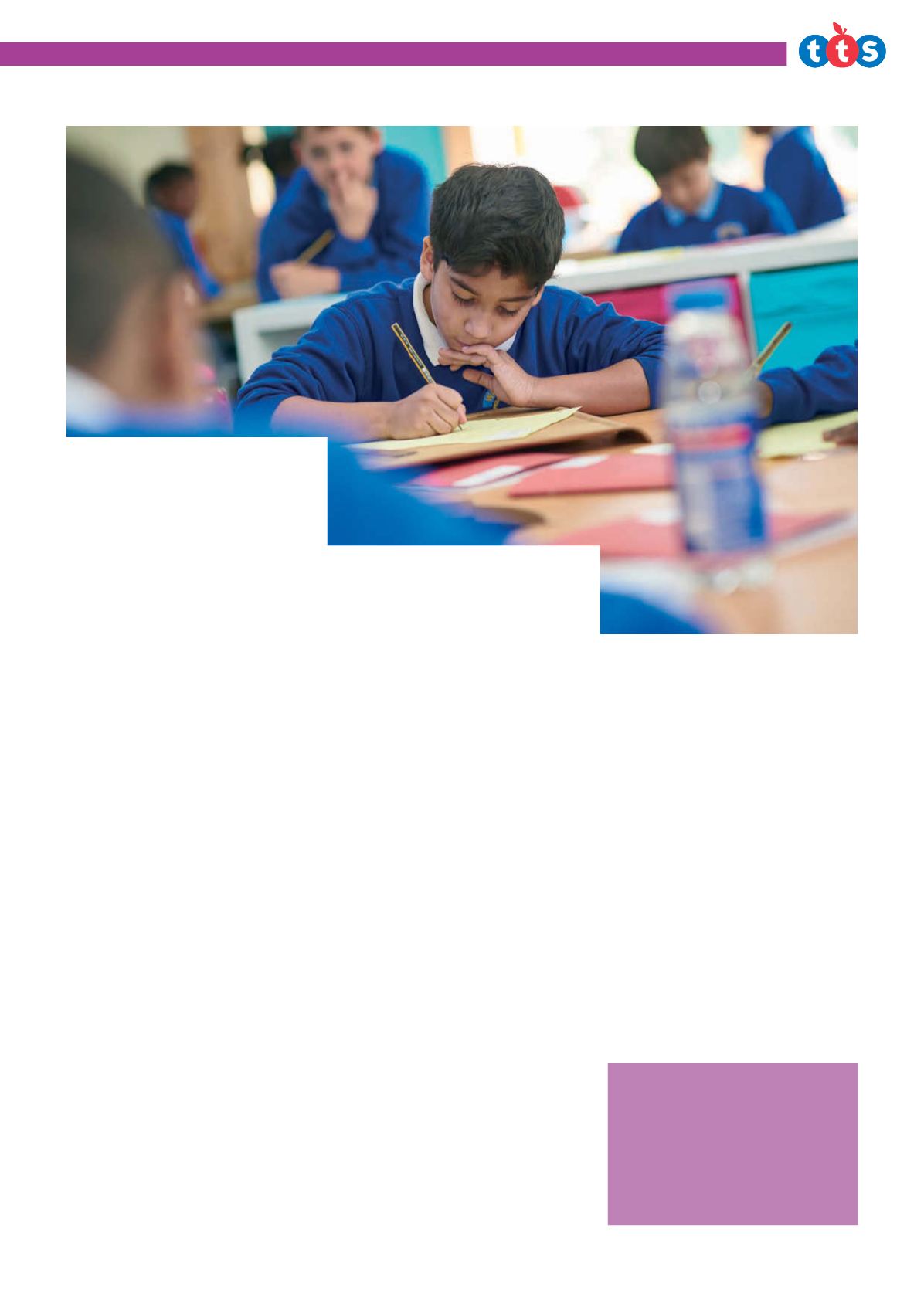
TEACH READING & WRITING
39
Ian Eagleton has been teaching
for 10 years and is currently a
Year 4 teacher and phase leader
at Elmwood Primary School, South
Woodham Ferrers. He also an English
consultant working with Just Imagine
(justimaginestorycentre.co.uk).
He can be contacted at:
meetings, taking part in children and parent
writingworkshops and running our book fairs.
These are all opportunities that are very real
and important to them. They arewriting at
greater length, across awider range of topics
and are thinking about how they canmotivate
and inspire a reader through their own
personal word choices. More importantly,
they are starting to tell mewhy they have
chosen a certain adjective, adverb or felt a
subordinate clausewas needed.
Children need to be aware of their reader
and how they can create a living, breathing
world of characters to enjoy. They need to
know their words have value and are listened
to; given time to talk and explore language so
that the sun’s rays can be as long as spaghetti
and that water can be as dazzling as the stars.
Children need to know that their words have
impact. They need to knowhow towrite, why
theywrite and towhomthey arewriting. This
is howwe develop the voice of a child.
3
Lessmarking,
morefeedback
My own feedback to children’swriting has
changed. I no longer write lengthy responses
such as, “Well done, you’ve used lots of good
adjectives, similes and adverbs!”. I talk to the
children, using the correct terminology, about
their writing and the image they are trying to
create. What did they imagine the reader
would be doingwhilst reading their story?
Thismeans less timemarking and being able
to give immediate and thorough feedback,
such as: “This short sentencemademe jump!”
or “Howcan you increase the tension and
excitement in this paragraph?” If theywant,
the children then use a purple pencil to edit
and improve their text.
4.
Handcontrol
topupils
When peermarking, my children nowhave the
freedomto choosewhether they change their
writing in the light of feedback fromtheir
response partner. They are in control.
Sometimes I’ve heard children say, “No, I
wanted to use that word because I think…”
Sometimes theymay gowith their partner’s
ideas. Children shouldn’t be pressured into
writingwhat or howwewant.
5
Readitout
The occasional mini-plenary throughout the
lesson is great for getting children to read
their writing and to give themfeedback. I do
lots ofmymarking in this time too, as I talk to
children about how their writing sounds and
the impact it’s had onme as a reader. I simply
write ‘Verbal Feedback’ (VF) in themargin.
Sometimes I ask children to read out a
sentence they’d like some advice about – or of
which they are particularly proud. This should
be a relaxed, enjoyable sessionwhere children
can share their writing and celebratewhat
they have achieved. Hearing their work read
aloud and themusicality of language
encourages other children to listenmore
carefully than if thework is placed under a
visualiser. It helps promote a love of
language, rhyme and pattern.
6
Letchildrenchoose
successcriteria
When I model writing, I talk continuously
about why I have chosen a certainword or
why I feel a particular sentence construct
workswell and how I wantmy reader to feel.
What I’ve changed, however, is that I nowgive
the children the option of usingmywork as a
scaffold or of creating their own success
criteria. However, they need to explain to
mewhat they are trying to achieve and
make their reader feel through the particular
style they have chosen. For example, they
may not wish to begin the introduction of
their report with a question. Children should
be allowed to take their reader on the journey
of their choosing.
7
Haveasenseof
purpose
Children atmy school are publishing articles
for the school’s newsletter, performing
scripts and poems to each other, taking part
in debates, writing letters toNASA, creating
their own eBooks. They arewriting
persuasive adverts for apps they’ve created,
using technology to plan and record their
ideas, taking notes in school council
In association with


